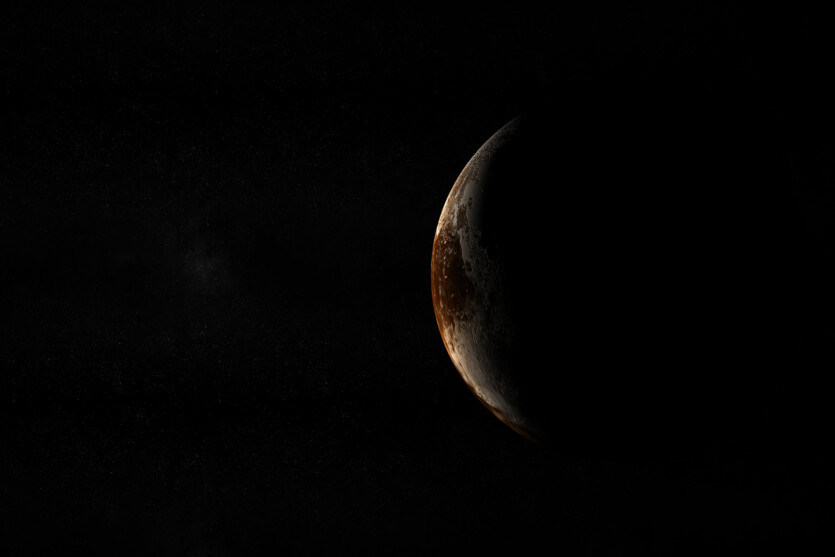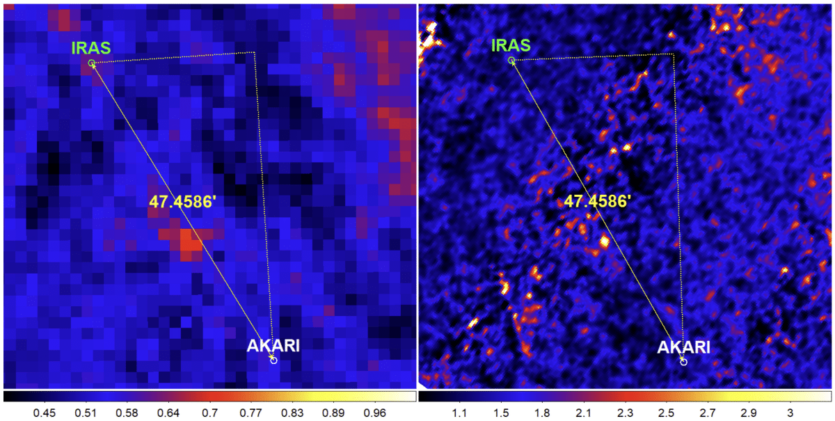
Astronomers may have found a new candidate for the role of the ninth planet in the solar system.
By examining infrared sky maps made by NASA’s IRAS satellite back in 1983 and Japan’s AKARI satellite between 2005 and 2011, they discovered a faint, slow-moving light source. Scientists claim that the object is located exactly where the mysterious ninth planet should be.
Beyond Neptune’s orbit, the Kuiper belt contains a large number of small icy objects at a distance of about 30-55 AU. The presence of a massive body far from the Sun is indicated by the shape of the orbits and the distribution of bodies in the Kuiper belt. Some of these objects, including the tiny planet Sedna, follow orbits that are grouped in one region of space, while the rest — are in another region. According to astrophysicist Michael Brown of the California Institute of Technology, who in 2016 presented his own hypothesis of the existence of the ninth planet, only another massive object, which is ten times more massive than the Earth. According to scientists, this object moves in an elongated orbit, moving away from the Sun at a distance of up to 700 AU.
In a new study, a group of astronomers led by Terry Long Fana of National Tsinghua University in Taiwan has combined catalogs of sky maps from IRAS and AKARI, containing about 2 million individual light sources. They calculated how bright a planet with a mass of 7 to 17 Earth masses should be. They also took into account the remoteness of the object, its temperature, location, and permissible radiation parameters in the infrared range.
According to astronomers’ calculations, mysterious object is 500-700 AU away from the Sun, which means that one orbit will take about 10 thousand years. The data obtained by astronomers indicate that this object moves only 3 angular minutes per year Its apparent position changes by 15 angular minutes every six months due to the Earth’s movement.

The astronomers found 13 pairs of objects matching these parameters and position changes. Twelve of them turned out to be image noise or dust clouds. However, one candidate had the same colors and brightness in the two data sets. According to the data AKARI, the object is moving very slowly. The distance between the objects on the IRAS maps from 1983 and AKARI maps from 2006 is 47 angular minutes. If it is the same object, its infrared brightness suggests a size similar to Neptune and a current distance of about 700 AU.
A number of other scholars have been skeptical of these data. Now we need to find this object based on more modern observations. The exact orbit cannot be calculated from IRAS and AKARI data alone of a hypothetical planet.
Some scientists believe that the signal from a pair of faint points will not persist with more careful study and after further observations. According to Michael Brown’s calculations, the object should be tilted about 120° from the plane of the solar system, which means that it will rotate in a different direction than the planets known to mankind, which are located approximately in the same plane.
«This discrepancy does not mean that it does not exist, but it does mean that it is not the Ninth Planet I don’t think this planet would have any impact on the solar system that we think we observe», — Michael Brown said.
So far, two points have been identified IRAS and AKARI, two decades apart, do not form an orbit. Astronomers led by Terry Long Fan expect to conduct further research using the Victor Blanco Telescope in Chile, which is capable of detecting the faintest objects using a dark energy camera.
In addition to this The Vera Rubin Observatory, which is due to begin full operation in Chile at the end of this year, will photograph the entire southern sky every few nights and is expected to discover tens of thousands of new objects in the Kuiper belt. If there is a ninth planet hiding there, daily observations should either confirm it or rule it out completely.
New exoplanet is so light, that astronomers don’t know, what it consists of
The study was published on the preprint server Arxiv
Source: ZMEScience

Spelling error report
The following text will be sent to our editors: